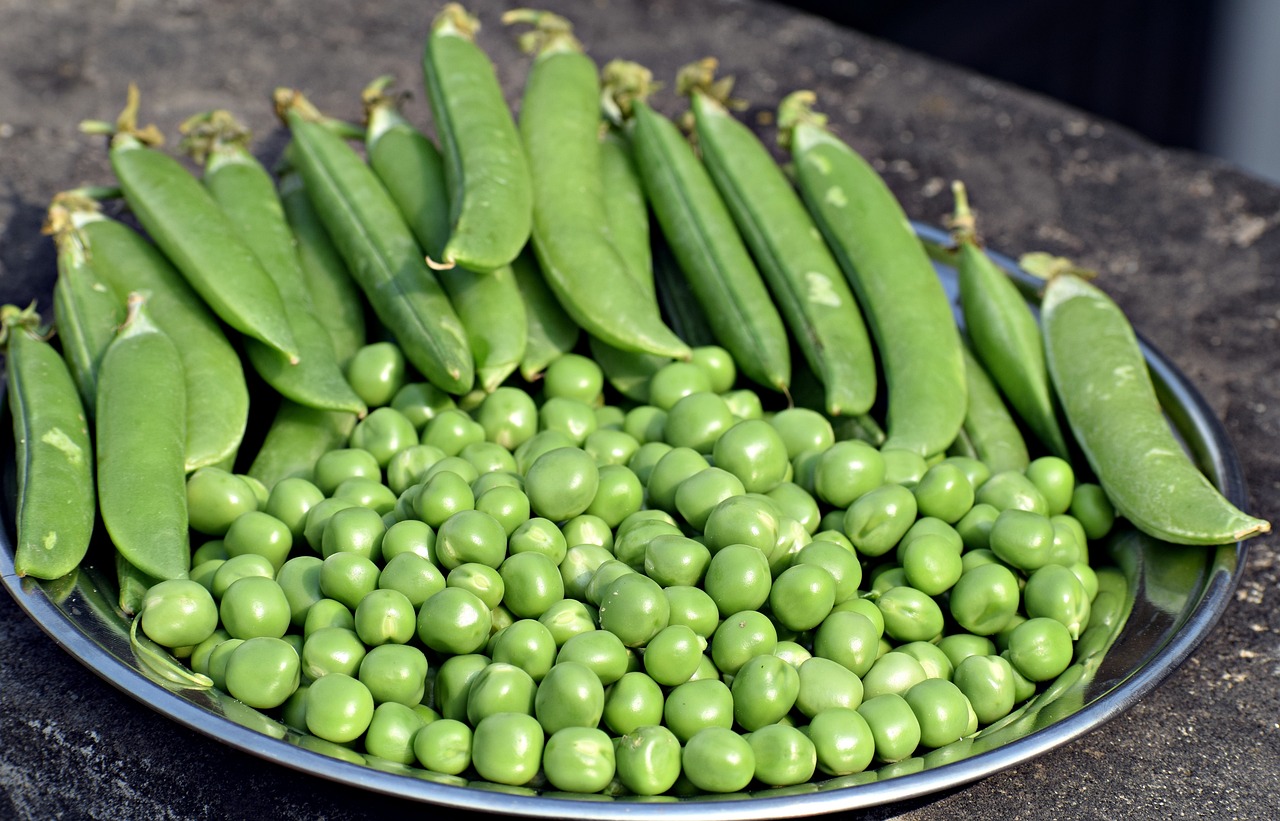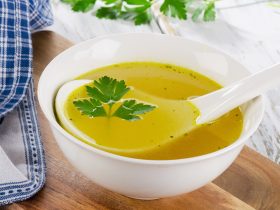Green peas, despite their small size, offer a powerhouse of nutrients and health advantages. They’re rich in pea protein and fiber, aiding in weight management and promoting digestion. Additionally, green peas are packed with antioxidants, along with essential micronutrients like vitamin K, vitamin C, and manganese.
Aside from their nutritional value, there are numerous delightful ways to savor this vegetable. Green peas can be eaten raw, cooked, boiled, or blended into soups and spreads. They also serve as a healthy addition to certain desserts, enriching them with nutrients while imparting a vibrant green color.
Given their versatility and multitude of health benefits, incorporating green peas into your diet is highly recommended, especially if you follow the vegan ketogenic diet, for example.
Explore the reasons why you should embrace green peas in your meals, along with some quick and effortless ways to relish them.
What are green peas?
Green peas are the seeds found within the pod fruit of Pisum sativum. They consist of pods containing several small green or yellow peas and are interestingly categorized as a fruit due to their seed content and their development from the ovary of the pea flower.
Despite their botanical classification as a fruit, green peas are predominantly utilized as vegetables in cooking. Varied pea varieties, including snow peas, sweet peas, and sugar snap peas, are commonly consumed either raw or cooked, contributing to dishes such as soups, stir-fries, and even desserts.
With an extensive culinary heritage, green peas are considered a fundamental ingredient in numerous cuisines, featuring in Indian, Chinese, Mediterranean, and British dishes.
Abundant in disease-fighting antioxidants, fiber, and protein, green peas offer several potential health benefits. Their consumption may aid in supporting healthy digestion, managing blood sugar levels, and facilitating weight loss.
Green peas have a historical cultivation background, being among the earliest cultivated crops. They were initially grown solely for their dry seeds. The term “pea” likely originated from the Greek word “pison,” which eventually evolved into “pise” and then “pease.” By 1600, the word “pea” as we know it today was established.
Evidence from archaeologists indicates that wild peas were consumed as far back as 9750 B.C. Written records dating to the 3rd century B.C. by Greek philosopher Theophrastus mentioned peas, along with other legumes, being sown in late winter due to their delicate nature.
In ancient Rome, peas were a significant part of the diet, with the “Apicius” cookbook featuring nine recipes using dried peas alongside herbs, meats, and various vegetables.
During the Middle Ages, peas served as an essential famine-preventing food. Subsequently, they transitioned into a luxury item and delicacy in some European regions.
By the 1800s, the availability of canned vegetables made peas more accessible, enabling widespread enjoyment of their taste and health benefits. The 1920s saw the surge of frozen foods, including frozen peas, extending their shelf life and further elevating their popularity as a nutritious “vegetable.”
Nutritional values of green peas
Green peas are a nutritional powerhouse, containing a wide range of essential vitamins and minerals. Despite being low in calories, they’re rich in fiber and protein, offering an impressive nutrient profile.
Here’s the approximate nutritional content in one cup (about 160 grams) of boiled green peas:
- Calories: 134
- Protein: 8.6 g
- Total Carbohydrates: 25 g
- Fiber: 8.8 g
- Sugar: 9.5 g
- Total Fat: 0.4 g
- Saturated Fat: 0.1 g
- Polyunsaturated Fat: 0.2 g
- Monounsaturated Fat: 0.03 g
- Trans Fat: 0 g
- Vitamin K: 41.4 mcg (35% DV*)
- Iron: 2.5 mg (14% DV)
- Phosphorus: 187 mg (15% DV)
- Niacin: 3.2 mg (20% DV)
- Sodium: 4.8 mg (0.2% Daily Value – DV)
- Vitamin C: 22.7 mg (25% DV)
- Riboflavin: 0.2 mg (15% DV)
- Copper: 0.3 mg (33% DV)
- Folate: 101 mcg (25% DV)
- Vitamin A: 64 mcg (7% DV)
- Vitamin B6: 0.3 mg (18% DV)
- Potassium: 434 mg (9% DV)
- Magnesium: 62.4 mg (15% DV)
- Zinc: 1.9 mg (17% DV)
- Manganese: 0.8 mg (35% DV)
- Thiamine: 0.4 mg (33% DV)
*Daily Value: Percentages are based on a diet of 2,000 calories a day.
Green peas also contain trace amounts of selenium, pantothenic acid, calcium, and vitamin E, further contributing to their nutritional value.
The types of green peas
there are various types of peas, each with distinct characteristics in taste and appearance.
Here are of some common varieties:
- Snow Peas: These peas have flat pods and small peas within the edible pod. They can be eaten raw or cooked and are often included in stir-fries and salads.
- Sugar Snap Peas: Known for their sweetness and crunchiness, sugar snap peas have edible pods and can be eaten whole, raw, or cooked. They’re versatile and used in various dishes.
- Sweet Peas (English or Garden Peas): This type requires shelling; the peas are removed from the pod before consumption. They have a mild, slightly sweet taste and are commonly found frozen or canned.
- Green Split Peas: These are dried, peeled, and split peas. They’re often used in soups and Indian dishes, like split pea soup.
- Cowpeas (Black-Eyed Peas): Cowpeas are legumes related to green peas but differ in taste and preparation. They need to be cooked for around 25–30 minutes and are used in various dishes like salads, stews, or curries.
Each variety offers its own nutritional benefits. Green peas are high in vitamin K and vitamin C, while cowpeas contain more folate and iron. Both are excellent sources of fiber and protein.
It’s important to note that while green peas can be eaten raw, cowpeas typically need cooking before consumption
The benefits of adding green peas to your diet
- May protect against cancer
Green peas are rich in antioxidants that combat free radicals, reducing inflammation and cellular oxidative damage. Their high antioxidant content suggests potential anticancer properties, as demonstrated in some laboratory studies.
Specifically, saponins, a type of antioxidant present in green peas, exhibit promising effects against tumor growth and cancer cells. Research, including a 2009 review from Canada and another published in Filoterapia, highlights the potential therapeutic effects of saponins found in legumes, like green peas, against various types of cancers.
This makes green peas a noteworthy addition to a cancer-fighting diet.
- Support blood sugar control
The combination of protein and fiber in green peas can help regulate blood sugar levels. Fiber slows the absorption of sugar into the bloodstream, aiding in stabilizing blood sugar. Additionally, increasing protein intake has shown to reduce blood sugar levels in individuals with type 2 diabetes. Green peas also have a low glycemic index, potentially reducing the risk of developing diabetes when consumed regularly, as per research published in the American Journal of Clinical Nutrition.
- Are rich in protein
Green peas are an excellent source of pea protein, providing around 8.6 grams per cup. Protein is crucial for various bodily functions, including tissue repair, hormone synthesis, and building muscle, hair, skin, and bones.
Including enough protein in your diet is vital for overall health, and green peas offer a plant-based protein option comparable to other protein-rich foods like quinoa and hemp seeds.
- Helps with weight loss
Despite being low in calories, green peas are high in protein and fiber. Incorporating them into your diet can assist in weight loss by helping you feel full, reducing cravings, and controlling appetite.
Protein slows stomach emptying and reduces hunger-inducing hormones, while fiber promotes a feeling of fullness, supporting weight loss efforts. Pairing peas with other high-fiber protein foods like lentils, nuts, and whole grains can further aid in reducing appetite.
You can safely add green peas to weight loss eating plans for men, for example, but they can be added to a variety of diets, regardless of the goals or sex of the individuals.
- Promote healthy digestion
A cup of green peas contains about 8.8 grams of dietary fiber, contributing significantly to your daily fiber intake. High-fiber foods, like green peas, play a crucial role in supporting digestive health.
Fiber adds bulk to stool, increasing stool frequency and promoting regular bowel movements. It also aids in managing digestive conditions such as GERD, stomach ulcers, diverticulitis, and hemorrhoids.
Different ways to incorporate green peas into your meals
- Salads: Add raw green peas to salads for a fresh and crunchy texture.
- Desserts: Surprisingly, green peas can work in desserts like cookies, cakes, cupcakes, and puddings, providing nutrients while maintaining a slightly sweet taste.
- Dips and Spreads: Puree peas to create dips or spreads. They can enhance guacamole or be used in pesto, which can be a tasty addition to sandwiches or a dip for veggies.
- Main Dishes: Incorporate green peas into pasta, rice dishes, or risotto for added flavor and nutrients.
- Soups: Boil green peas and blend them to create creamy soups or purees.
- Pea Milk: Consider pea milk as an alternative to traditional dairy milk in your recipes or as a beverage.
These options showcase the versatility of green peas and how they can be creatively used in various recipes to increase their nutritional value and flavor.
Potential risks and side effects of consuming green peas
Allergic reactions
Some individuals may experience allergic reactions after consuming green peas, leading to symptoms like hives, swelling, itching, nausea, or skin rashes.
If you notice these symptoms or any adverse reactions, it’s advisable to stop consuming green peas and seek medical advice.
You can learn more about allergies from our dedicated article.
Gastrointestinal issues
Due to their high fiber content, green peas might cause gastrointestinal problems in certain individuals.
Lectins found in peas, a type of carbohydrate, may ferment in the gut and exacerbate digestive symptoms such as bloating, nausea, or flatulence.
Soaking green peas before consumption can help reduce lectin content and alleviate these symptoms.
Antinutrients
Green peas contain antinutrients that may interfere with the absorption of certain vitamins and minerals.
While this isn’t a significant concern for most people, those with a diet heavily reliant on green peas may consider cooking them thoroughly, moderating intake, or using methods like soaking or sprouting to reduce antinutrient levels.
Being aware of these potential side effects and taking necessary precautions can help individuals manage any adverse reactions associated with consuming green peas.
If persistent or severe issues occur, consulting a healthcare professional is recommended.














Find Us on Socials